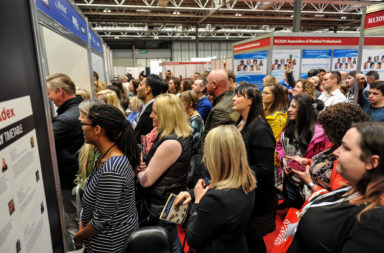Team BRIT is creating an exciting opportunity for disabled drivers, through its new Racing Academy, giving any disabled driver with a full UK licence the chance to receive race tuition, mentoring and coaching, plus the chance to undertake their official race licence test. Those that pass and show promise may be given the opportunity to try out as the next Team BRIT rookie.
The racing team, which includes disabled drivers aims to be the
The academy will offer expert tuition, coaching and instruction, along with the chance to take an ARDS (Association of Racing Driver Schools) test, something never previously available to disabled drivers. If passed, it will equip them with a race licence, enabling them to race at circuits all over the UK.
The Academy provides an amazing opportunity to get behind the wheel of race prepared cars, ranging from VW Polos to BMW 116s and supercars with the use of world-leading hand controls as well as training on a top of the range Vesaro simulator. Track days using supercars fitted with hand
Racing
Disabled drivers who successfully attain their ARDs licence may also be offered the chance to try out as rookies with Team BRIT.
Team BRIT Founder and CEO, Dave Player said: “Our goal has always been far greater than Le Mans. We want to revolutionise motorsport and normalise disability. Motorsport should be accessible to everyone, and through our academy, we’re giving any driver with a full UK licence, the chance to get behind the wheel and learn how to race.
Our technology means that drivers with a wide range of disabilities can learn to drive competitively, and can line up on the grid against able-bodied drivers.”
What does it take to race?
Ash Hall served in bomb disposal in Afghanistan where he received severe injuries, including double above knee amputation by an IED in 2010. Having already competed in the Invictus Games, he was contacted by Team BRIT and given an opportunity to race.
Ash spoke with DriveAble about his preparations for the 2019 season.
Do you use similar adaptations to your everyday domestic car?
What are the major differences between being on a track and a road?
The cars that we’re using at the minute are both a BMW 116 which we’ll be racing in for the 116 Trophy Championship this year. It’s only the 120 brake horsepower engine but
It’s a bit of a thrill really: an adrenaline rush. Quite a few of the blokes on the team are ex-Military and have life-changing injuries and I think it sort of replaces that thrill of being on exercise. I suppose we’re all sort of adrenaline junkies in one way or another.
How is the Race Academy set up?
For a disabled
The academy really is a gateway for disabled people to get into motorsport. People can pay a small sum of money to come and do a track day to see if they like it. If they’re good at it and they want to progress, the team’s there to help get their Association of Racing Drivers Schools (ARDS) test.
I was quite lucky, I did my ARDS test in my own vehicle because I’ve always been into cars. I already had a track car set up but for other people that watch motorsport the Academy’s there and they can give it a try without having to spend thousands on building a vehicle.
You’ve driven cars with ordinary controls and cars with adaptations. Which do you prefer?
Well, there’s a reason that every car’s the way it is and that’s because it works. There’s still things that we’re learning with our hand controls because they’re
About Team BRIT
Team BRIT is a branch of the charity, KartForce, set up to inspire people with disabilities, PTSD and mental health issues by demonstrating what can be achieved through motorsport. It aims to show injured military personnel and disabled people that they can achieve what they never thought possible, that they can compete at the highest level, and to equip them with a wide range of personal and professional skills through understanding the business of motorsport.



